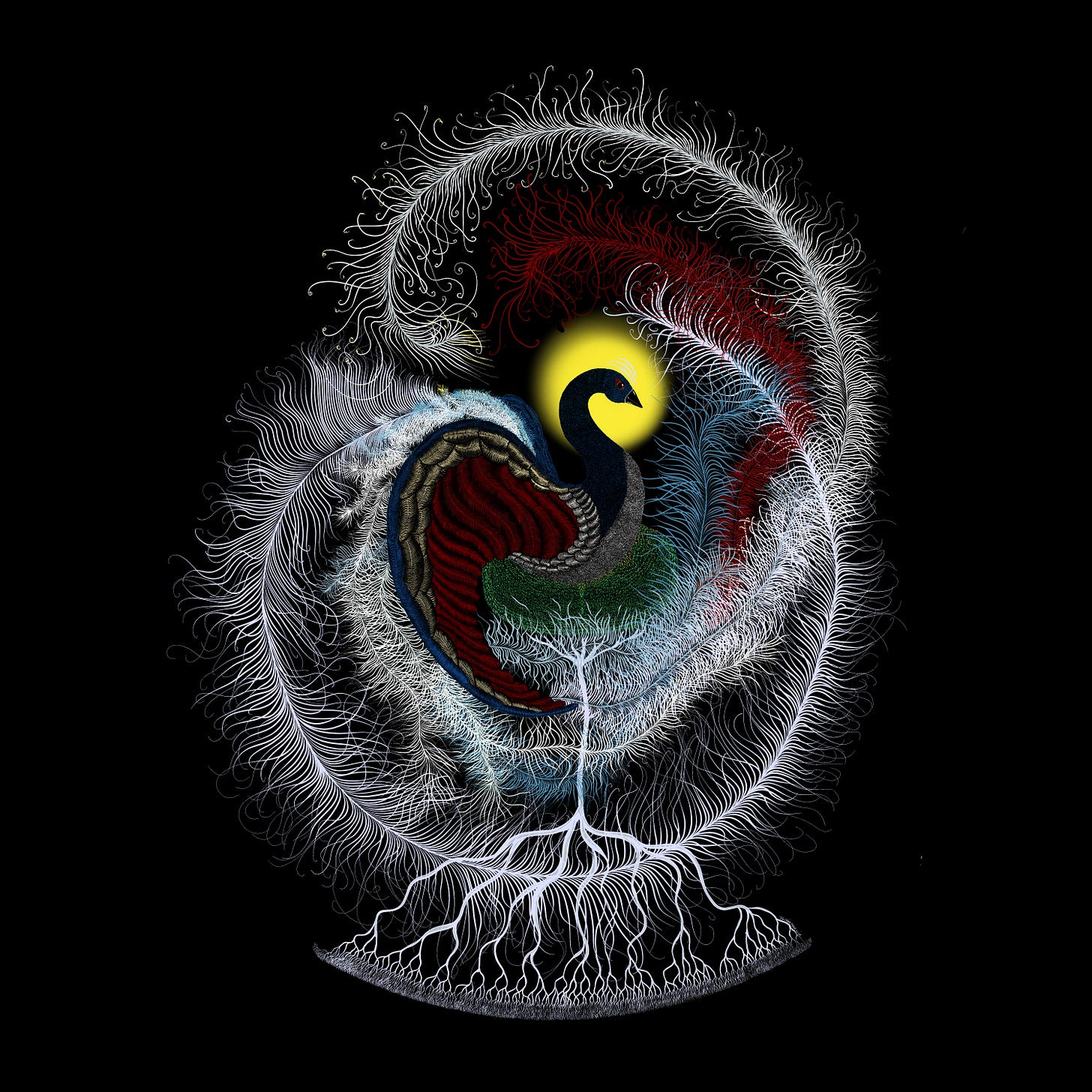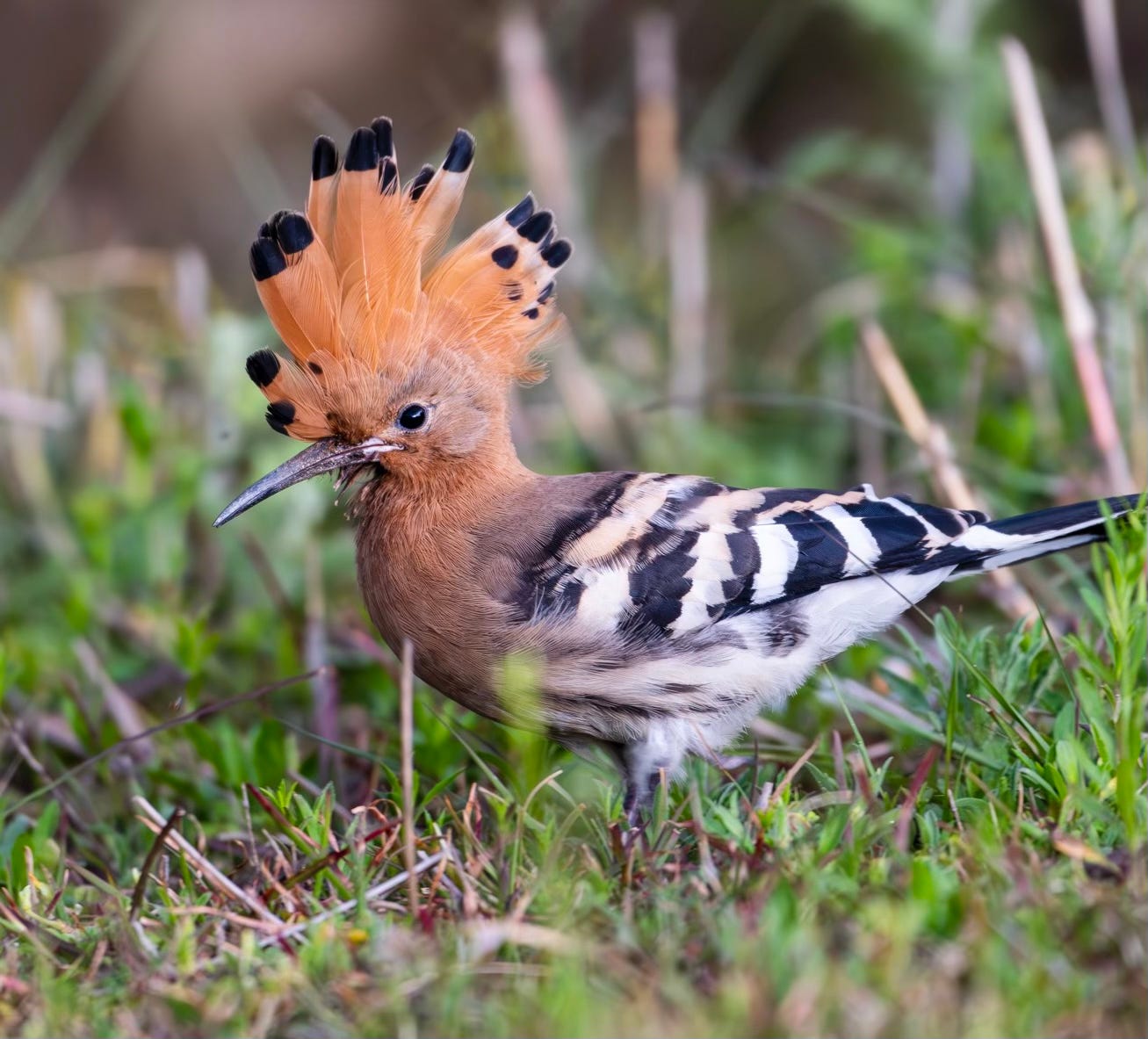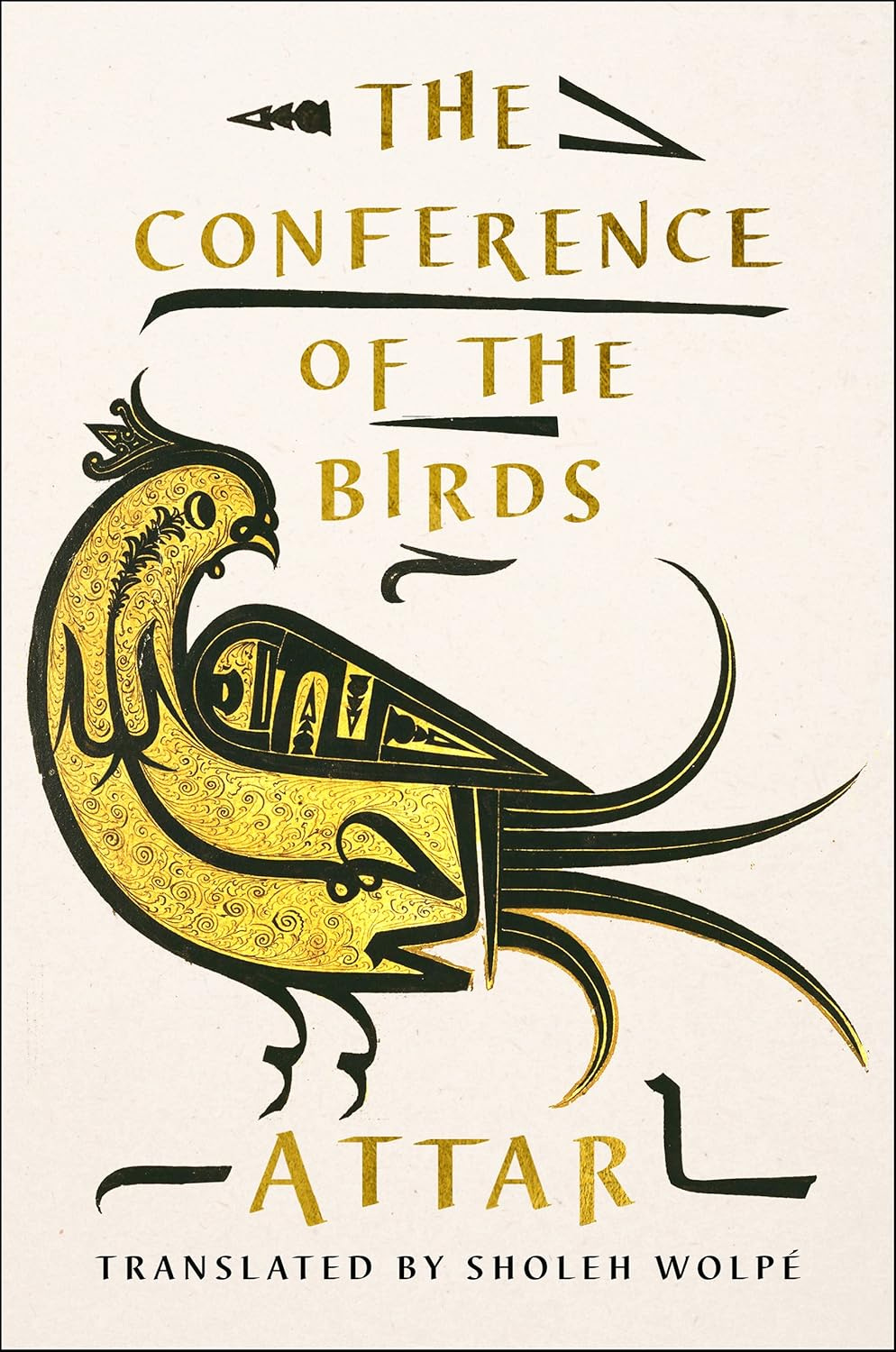As a respite from my recent enthusiasm for snakes and tortoises, I was “commssioned” to produce a “bird” a few weeks ago. The result is above (in a low resolution image - I’m quite pleased with the details, which don’t show here). This creature, as She took shape, brought to mind the Simurgh of Sufi legend. I’ll admit to never having read Attar’s classic Conference of the Birds, in which this transcendent creature is the central figure, which turns out to have been a mistake. A quick search of wikipedia brought me to Sholeh Wolpé’s recent translation, and to her introduction, where we read the following:
The hoopoe tells the birds that they have to cross seven valleys in order to reach the abode of Simorgh. These valleys are as follows:
1. Valley of the Quest, where the Wayfarer begins by casting aside all dogma, belief, and unbelief.
2. Valley of Love, where reason is abandoned for the sake of love.
3. Valley of Knowledge, where worldly knowledge becomes utterly useless.
4. Valley of Detachment, where all desires and attachments to the world are given up. Here, what is assumed to be “reality” vanishes.
5. Valley of Unity, where the Wayfarer realizes that everything is connected and that the Beloved is beyond everything, including harmony, multiplicity, and eternity.
6. Valley of Wonderment, where, entranced by the beauty of the Beloved, the Wayfarer becomes perplexed and, steeped in awe, finds that he has never known or understood anything.
7. Valley of Poverty and Annihilation, where the self disappears into the universe and the Wayfarer becomes timeless, existing in both the past and the future.
There’s a lot to unpack here. First, and least important, but fun, is the hoopoe. I had always assumed this was a mythic bird. Not so. The species, wonderfully, is Upupa epops (L., 1758). And here is one:
[upupa was it’s Latin name, epops the ancient Greek, and hoopoe is apparently from the Old French - all are onomatopoetic. The call is oop oop oop. Also it has been the national bird of Israel since 2008…]
But more importantly we have the 7 valleys of the journey. Wolpé’s description stopped me cold. I am supposed to know these stages from 34 years with Henry Corbin. I certainly recognize them. But to have them labelled so clearly, in this particular sequence, was startling. Especially after our voyages through the worlds of the Weird and Impossible. I suppose I could carefully compare these stages with the critical guide to thinking Impossibly that Jeff Kripal appends to his book with Whitley Strieber, The Super Natural, but it probably wouldn’t be all that useful, really. I will say that the intention there is similar in some post-Enlightenment way: to make it possible for us to know how we might access reality outside of the conditions of (normal?) human experience.
The 7 Valleys also resonate with the 12 Theses on Attention that we have thanks to the “Friends of Attention” and that I flagged here at least once recently. Attention is the highest form of prayer (Simone Weil) and doubtless required to pass through these Valleys. We should all have these theses memorized (I don’t, yet).
The other huge door this opened for us is thanks to Sholeh Wolpé - here is her 2017 translation of Attar’s 12th century Persian classic -
Wolpé is not only a poet, but a librettist and playwrite, and recently collaborated with Farhad Siadat in a production of an oratorio of The Conference of the Birds! that you can watch on Youtube or listen to via streaming or CD:
If this isn’t enough to keep you all busy for a while, and bring you joy for the New Year, then remember we’re going to be reading Emanuele Coccia’s Philosophy of the Home: Domestic Space and Happiness in less than 3 weeks. Hope to see you then - there’s will be a signup reminder after Christmas.









What a great posting - so many intriguing things to follow…
Also of interest is the Diane de Selliers illustrated edition of the Afkham Arbandi / Dick Davis translation of The Canticle of the Birds. Hard to find, and pricey, but invaluable for the introductory essays, especially the commentary of Michael Barry. Most wonderful of all is the array of art collected and integrated into the text by the editors. After several failed attempts to read Conference/Canticle of the Birds, this finally did the trick. It takes you into a world you never want to leave.
And in the Michael Barry vein, see also his Design and Color in Islamic Architecture. It is a stunning presentation of the Haft Paykar (Seven Beauties), and how traditional Islamic crafts draw on alchemical processes to illustrate the esoteric nature of all things “seven” in Sufism and Islam more generally. Back in the mid-90s (at latest) Barry, like Tom Cheetham, was very much onto Henry Corbin, who Barry invokes in this book, making his own brief translations from Corbin’s original French. Like the book above, this is a real achievement of world-creation, both literal and imaginal.
Love your drawing! and wonder if it is something we ought to memorize or rather remember, in the body of all?